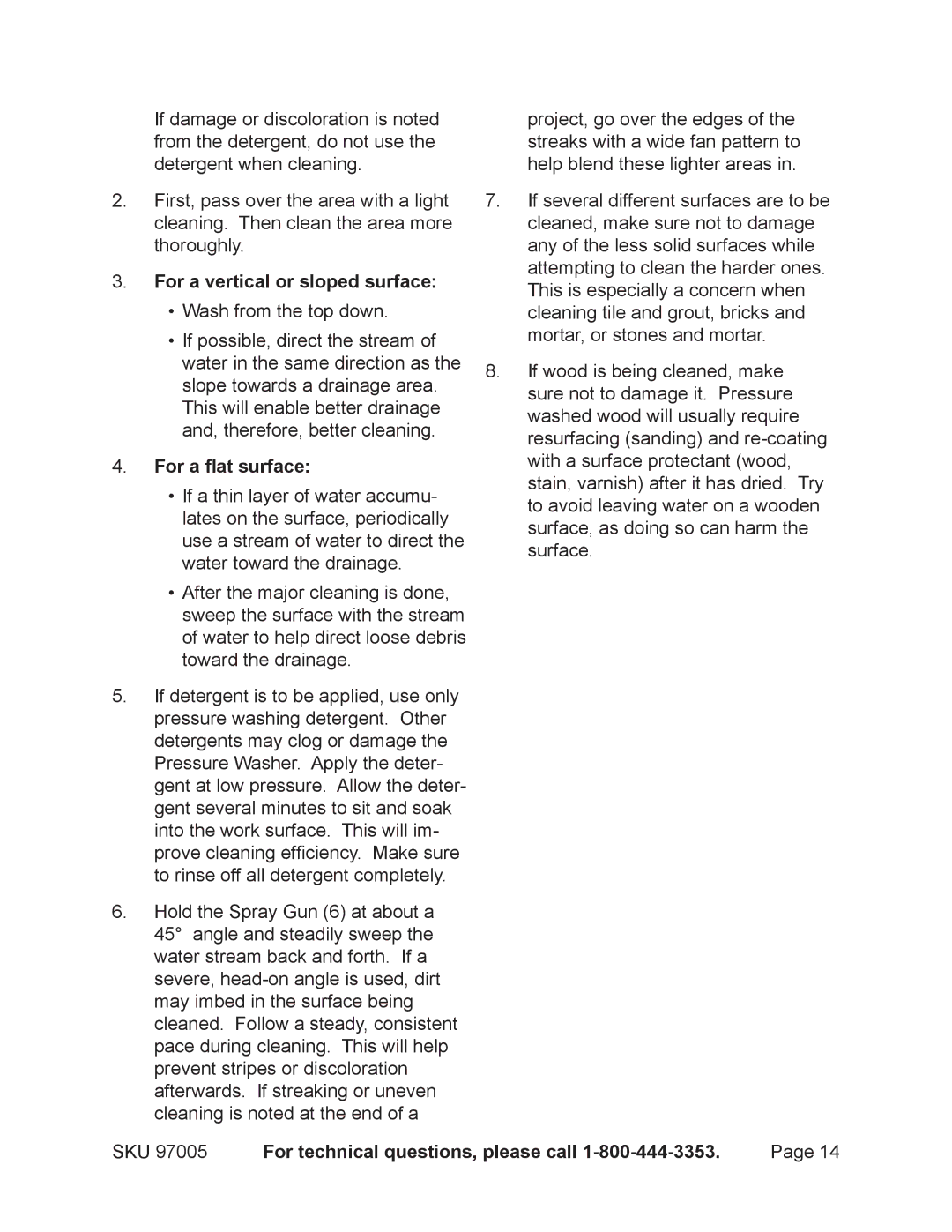If damage or discoloration is noted from the detergent, do not use the detergent when cleaning.
2.First, pass over the area with a light cleaning. Then clean the area more thoroughly.
3.For a vertical or sloped surface:
•Wash from the top down.
•If possible, direct the stream of water in the same direction as the slope towards a drainage area. This will enable better drainage and, therefore, better cleaning.
4.For a flat surface:
•If a thin layer of water accumu- lates on the surface, periodically use a stream of water to direct the water toward the drainage.
•After the major cleaning is done, sweep the surface with the stream of water to help direct loose debris toward the drainage.
5.If detergent is to be applied, use only pressure washing detergent. Other detergents may clog or damage the Pressure Washer. Apply the deter- gent at low pressure. Allow the deter- gent several minutes to sit and soak into the work surface. This will im- prove cleaning efficiency. Make sure to rinse off all detergent completely.
6.Hold the Spray Gun (6) at about a 45° angle and steadily sweep the water stream back and forth. If a severe,
project, go over the edges of the streaks with a wide fan pattern to help blend these lighter areas in.
7.If several different surfaces are to be cleaned, make sure not to damage any of the less solid surfaces while attempting to clean the harder ones. This is especially a concern when cleaning tile and grout, bricks and mortar, or stones and mortar.
8.If wood is being cleaned, make sure not to damage it. Pressure washed wood will usually require resurfacing (sanding) and
SKU 97005 | For technical questions, please call | Page 14 |
